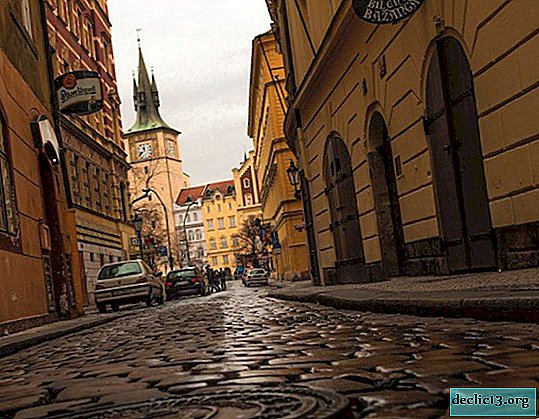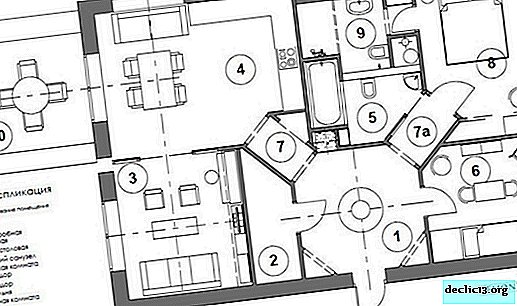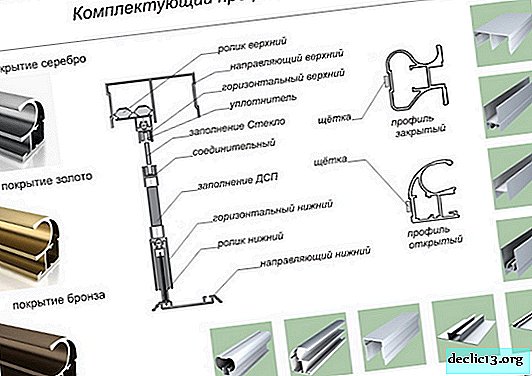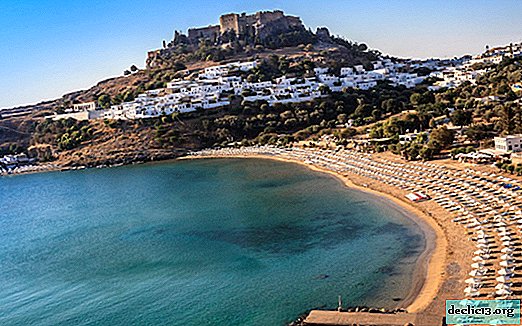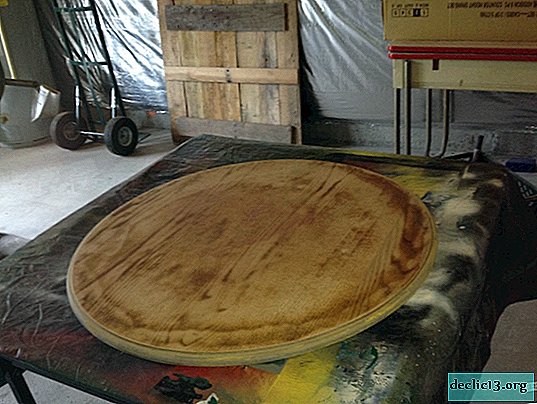Dolmabahçe Palace: Turkish luxury on the banks of the Bosphorus
Dolmabahce Palace is a luxurious historical complex located on the shores of the famous Bosphorus Strait in Istanbul. The uniqueness of this building lies in the fact that it was built in a completely baroque style not typical of Turkish architecture. The length of the attraction along the coast is 600 meters. The area of the palace is 45 thousand square meters. meters, and the total area of the complex with all buildings is 110 thousand square meters. meters. The interior of the museum exceeds all the wildest expectations.
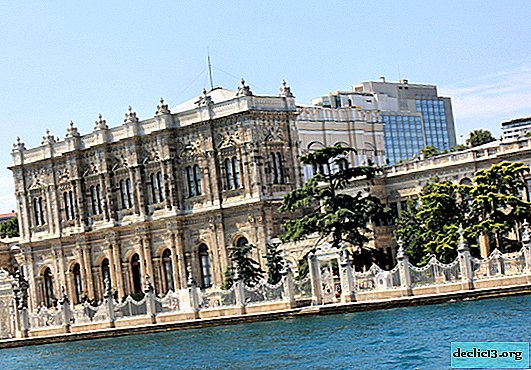
Dolmabahçe in Istanbul has 285 rooms, 44 spacious rooms, 68 toilets and 6 Turkish baths. Today, some rooms serve as exhibition venues for a variety of rare things, objects of art and jewelry. The luxury and grandeur of the castle annually attracts more and more tourists, and in recent years the object has entered the top five most visited sights of Istanbul. A detailed description of the castle, as well as useful practical information, can be found in our article.
Short story
 Abdul-Majid I
Abdul-Majid IThe idea to build the Dolmabahçe Palace in Istanbul, in keeping with the spirit of modern times, came to the 31st Ottoman Empire - Abdul-Majid I. The Sultan was delighted with the graceful European castles and the boring medieval interiors of Topkapi. Therefore, the ruler decided to build a palace that could compete with the leading castles of Europe. An architect of Armenian origin by the name of Karapet Balyan undertook to realize the idea of the Sultan.
Translated from the Turkish language, the name "Dolmabahçe" is interpreted as "bulk garden", and such a name has a historical explanation. The fact is that the picturesque coast of the Bosphorus served as the site for the construction of the object. Interestingly, until the 17th century, the waters of the strait completely splashed on this territory, which then turned into a swamp. During the reign of Ahmed I, it was drained and covered with sand, and on the formed piece of land a wooden palace Besiktas was erected. But the building did not stand the test of time and as a result collapsed. It was here on the embankments in 1842 that the construction of Dolmabahce began, which took 11 years.
Colossal sums were spent on the construction of the palace: more than 40 tons of silver and more than 15 tons of gold were spent only on the decoration of the building. But some interior items went to the padishah as a gift. So, a huge crystal chandelier weighing at least 4.5 tons was a gift from the English Queen Victoria, who personally visited the padishah in 1853. Today, this luxurious gift adorns the castle's Ceremonial Hall.

Dolmabahçe remained the current palace of the Ottoman sultans until the collapse of the empire and the beginning of the reign of Mustafa Kemal Atatürk. The president used the complex as his residence in Istanbul: here the ruler received foreign guests and held public events. Within the walls of the Ataturk palace, he died in 1938. From 1949 to 1952, restoration work was carried out in the castle of Istanbul, after which Dolmabahce was transformed into a museum and opened its doors to everyone.
Palace structure
Photos of the Dolmabahçe Palace in Istanbul can be bewitching from the first seconds, but they are not able to convey the grandeur of this building. Built in the Baroque style, complemented by Rococo and neoclassicism, the castle consists of two parts: the residential, where the harem was located, and the public, where the Sultan held important meetings, met guests and arranged festivities. In addition, Dolmabahçe has state apartments with a picturesque panorama of the Bosphorus. The museum has many objects that are worthy of attention, and among them:
Clock Tower and Treasure GateIn front of the entrance to the beautiful castle of Istanbul, the first outdoor attraction of the complex rises - the Clock Tower. The facility was built in the late 19th century in a non-baroque architectural style. The height of the tower is 27 meters. The dial itself was made in France. The clock tower often serves as the main visual landmark of the palace for tourists.

Not far from it is the main entrance, called the Gate of Treasures. Their center is a large arch, above which a watch with a gilt dial flaunts. Two columns are located on the sides of the arch, and forged gates with gilding are installed inside. The beauty of this structure further fuels interest in the interior of the complex.
 Sufer Hall
Sufer HallThe Hall of Sufer or, as it is often called, the Hall of Ambassadors, once served to receive foreign envoys. Here the Sultan held his key meetings, organized meetings and negotiated. Luxury is enclosed in every detail of the interior of this chamber: stucco made of gold, tiled stove, crystal chandeliers, antique gilded furniture and painted vases are complemented by bear skins and handmade silk carpet.

Next to the chamber of Sufer is the Red Hall, named after the main tone of its interior. In this color, diluted with golden notes, curtains and furniture are presented here. The room also served as a meeting for the Sultan with ambassadors from different states.
Hall of ceremoniesThe ceremonial hall is the main place for celebrations and festivities in the Dolmabahçe Palace, the photo of which is able to convey its luxury only partially. Architects from France and Italy were invited to decorate the chamber. The decoration is dominated by gilded arched arcades with columns, and the corners of the room are decorated with ceramic fireplaces, over which crystals hang, every hour playing with different colors.

But the main decoration of the hall is a gorgeous crystal chandelier, donated by the Queen to Queen Victoria. The chandelier hanging from a height of 36 meters is decorated with 750 candlesticks and is considered the largest and heaviest in the world. Another delight of the Ceremonial Chamber was a huge oriental rug, whose area is 124 square meters. meter, making it the largest carpet in Turkey.
Clerk's hall
Next to the Ceremonial Hall is another interesting chamber - the Clerk's Hall or the Secretariat Room. The main value of this part of the palace was a painting by Italian Stefano Ussi. The artwork depicts the Muslim pilgrimage from Istanbul to Mecca. The canvas was donated to the padishah by the Egyptian ruler Ismail Pasha and today is the largest painting in the Dolmabahçe Palace.
Imperial staircase
The main palace staircase, connecting the first and second floors, called the Imperial, deserves special attention. This is a true masterpiece of architectural design, executed in the Baroque style. The main feature of the stairs was the railing, completely made of crystal. For their decoration, crystals of the famous French factory Baccarat were used.
HaremMore than half of the area of the Dolmabahçe Palace in Istanbul was reserved for a harem, in the eastern section of which were the chambers of the Padishah’s mother and his family. In the rooms located on the street, the concubines of the Sultan lived. The interior of the harem in Dolmabahça is characterized by the interweaving of European and Oriental motifs, but in general its chambers are made in neo-baroque style.

Of greatest interest here is the Blue Hall, which received this name due to the main shade of furniture and curtains. In this chamber, events related to religious holidays were held, during which the inhabitants of the harem were allowed here. The second notable object in this part of the palace was the Pink Hall, also named after the shade dominating in its interiors. A picturesque panorama of the Bosphorus opens from here, and the room often served as a hall for the distinguished guests received by the mother of the Sultan.
On a note: Where to eat in Istanbul with beautiful panoramic views, read this article.
In the southern section of the museum is located Dolmabahce Mosque, which was erected in 1855. The architecture of the building is Baroque. After the collapse of the Ottoman Empire, the temple was transformed into a museum, where items of the naval industry were exhibited. Gradually, the building fell into decay, but it was soon reconstructed, and services began to be held again in the walls of the mosque.
 Clock Museum
Clock Museum
Having gone through a long restoration, in 2010 the gallery reopened its doors for everyone to get acquainted with unique watch exhibits. Today 71 items are on display, among which you can see the personal watches of the Sultans, as well as items created manually by eminent masters of the Ottoman Empire.
Museum of Painting and SculptureDolmabahce Palace in Istanbul is famous for its rich collection of artworks by world famous painters. The interiors of the castle include more than 600 paintings, about 40 of which are painted by eminent Russian artist I.K. Aivazovsky.
Once, Sultan Abdul-Majid I was presented with a picture of a painter depicting the landscape of the Bosphorus, and the padishah liked the work of Aivazovsky to the extent that he ordered another 10 paintings. Once in Istanbul, the artist personally met with the Sultan and settled in the palace, from where he drew inspiration for his creations. Over time, Abdul-Majid I and Aivazovsky became friends, after which the padish made an order for several dozen paintings.
Ataturk's roomAt the beginning of the 20th century, 20 rooms were allocated for the museum of painting in the castle, where they began to exhibit not only the works of great artists, but also the products of sculptors. Today, a total of about 3,000 exhibits are displayed here.

The national hero of Turkey, the first president of the state, Mustafa Kemal Atatürk was the last to live in the Dolmabahçe Palace. It was located in the former bedroom of the Sultan, which he ordered to furnish simply and modestly. It was here that the president spent the last days of his life. It is noteworthy that the hands of all the clocks in the castle show 09:05, because it was at this time that Ataturk let out his last breath.
You might be interested in: What is remarkable about the Gulhane Park in Istanbul and why it is worth a visit, find out on this page.Find out RATES or book any accommodation using this form
How to get there
The last residence of the Sultans is in the Besiktas region. And the answer to the question of how to get to Dolmabahçe Palace will completely depend on your starting point. Therefore, we will consider the most popular tourist places from where you can get to the sights.
From Sultanahmed Square
The palace is about 5 km from Sultanahmed Square. You can get to Dolmabahçe from here by tram line T 1 Bağılar - Kabataş, towards Kabataş. You need to land at the final stop, after which you will have to walk another 900 meters to the north-east of the station and you will be on the spot. You can also take the TV 2 bus, which runs every 5 minutes and stops just 400 meters from the castle.
From Taksim Square
A trip to the palace from Taksim Square will not take much time, because the distance between these points is just over 1.5 km. To get to Dolmabahce, you can use the option of buses of routes TV 1 and TV 2, which depart from the square every 5 minutes and stop in the immediate vicinity of the attraction. In addition, you can come from Taksim to the palace by the funicular of the F1 Taksim-Kabataş branch. Transport runs every 5 minutes. You will need to land at the Kabataş station and walk to the palace 900 meters.
If you plan to travel around Istanbul by metro, it will be useful for you to read this article.
Compare accommodation prices using this form
Practical information

The exact address: Vişnezade Mahallesi, Dolmabahçe Cd. No: 2, 34357, Besiktas district, Istanbul.
Opening hours Dolmabahce Palace in Istanbul. The facility is open daily from 9:00 to 16:00. Ticket offices close at 15:00. Weekends are Monday and Thursday.
Admission price. We want to draw your attention to the fact that the cost of tickets to the Dolmabahce Palace in Istanbul may vary depending on the objects that you plan to visit. For 2018, the following prices apply:
- Palace - 60 tl
- Harem - 40 tl
- Clock Museum - 20 tl
- Palace + Harem + Clock Museum - 90 tl
Official site: www.dolmabahcepalace.com
Interesting Facts

- Dolmabahçe served as the residence of the last six Sultans of the Ottoman Empire.
- When decorating the castle, very expensive stones were used, such as Egyptian alabaster, Marmara marble and porphyry from Pergamum.
- Once the palace made the largest order from the masters of the city of Hereke: the sultan ordered the creation of 131 handmade silk carpet.
- Dolmabahçe is considered the largest palace in area in Turkey.
- Padishah was often presented with gifts, and one of them was a gift from the Russian emperor. It was a bear's skin, originally white, but subsequently painted black by order of the Sultan for practical reasons.
- It is noteworthy that the palace kitchens are located outside the Dolmabahce itself in a separate building. And this has its own explanation: it was believed that the fragrant smells of food distract officials and the Sultan from public affairs. Therefore, there are simply no kitchens in the palace itself.
Useful Tips
In order for your tour of the Dolmabahçe Palace to go smoothly, we have prepared some practical recommendations for you:

- At the entrance to the museum you can take a free audio guide, leaving bail documents or $ 100.
- No more than 3,000 visitors are allowed into the palace per day, so the sights always have large queues at the ticket office. To avoid a long wait, we advise you to arrive at the place early in the morning.
- A full inspection of Dolmabahçe will take from 2 to 3 hours, so calculate your time.
- Near the palace there is a cafe with reasonable prices and beautiful views of the Bosphorus, which is definitely worth a visit.
- You can get to Dolmabahçe in Istanbul only with a guided tour. Independent exploration of the castle is not possible. For other excursions in Istanbul - from local residents - read here.
- Photography and video shooting in the internal territory of the attraction is prohibited: security guards who do not wear special uniforms, but wear ordinary clothes, strictly monitor the order. But some tourists still manage to seize the moment and make a couple of shots. You can calculate a museum employee by the absence of shoe covers on it. It remains only to wait until you are out of his field of vision, and the precious picture is ready for memory.
- Be sure to take free booklets at the entrance: they can also find a lot of interesting information about the palace.
- It is worth considering that the museum map for Dolmabahce does not work, so if the castle is the only place you plan to visit in Istanbul, then you should not buy it.

Output
Dolmabahçe Palace can change your understanding of Turkish architecture from the Ottoman Empire. Despite the fact that the castle was built in the European style, oriental notes are still clearly visible in it. The palace became a kind of reflection of the Bosphorus itself, which connected Europe and Asia and harmoniously intertwined their traditions, giving rise to a completely different culture.
Practical and useful information about visiting the palace is also presented in this video.

